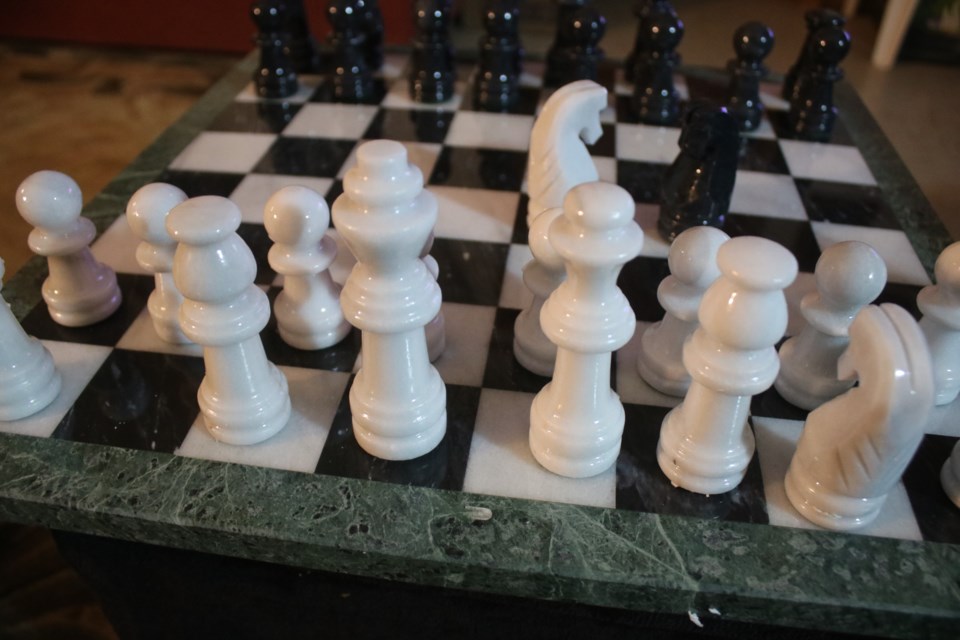That is actually kind of interesting when you consider the western chess most of us are at least familiar with has been around since around 1475.
You might think a game which has survived for more than 500 years, as national and international championships, hundreds of thousands of players and boards still available on game shelves all over would be recognized as pretty good and in no real need of tweaking.
But tweaking chess is something designers from world chess champions to the guy next door have been doing at least back into the late 1800s, and they have done it often.
There are literally hundreds of variants, some with very minor changes to the game to others where you can still sense chess at its core but it is really quite a different animal of its own.
Head over to a webpage such as chessvariants.com and you can wade through the many, but understand most are at best novelties, although some are true nuggets of joy. Of course every chess gamer is likely to have a different opinion on which are nuggets and which as merely chaff (to mix metaphors a tad).
For the record Plunder, Omega, 960, Grand, Spartan, Proteus, Odin’s Rune Chess and Navia Drapt would be my suggestions to check out.
But, what got me started down the chess rabbit hole this day is a current Kickstarter campaign for Chess 2.0 Evolution.
Like every new variant it promises a bold new experience in terms of chess and this one might actually do that, although the changes here aren’t exactly new, and admittedly this one has not yet been played so this review is very much theoretical at this point.
When it comes to the movement of pieces, and board layout it’s a rather sure bet most things have been incorporated at some point in one of the myriad of variants mentioned earlier.
The trick today is taking all the varied options and melding it into a cohesive game system that is playable.
In the case of Chess 2.0 they have borrowed ideas, or created independently only to have them mimic previous ideas from several variants.
For example, Chess 2.0 allows for random placement of the ‘power’ pieces, which of course is at the heart of 960 Chess by for World Chess Champion Bobby Fischer created rather recently in 1996. It’s actually a rather common sense change to the game helping alleviate the tendency of chess to follow a rather defined set of well-known opening (at least among the best players).
Chess 2.0 also places the game’s pawn equivalents on the third row of the 10X10 board the power pieces settling in behind.
Grand Chess is notable for its basically empty final row to open the game up just a bit.
Chess 2.0 has each player make two moves per turn, which the KS suggests facilitates attack and defence on the same turn.
Well two moves a turn should quicken things, and it will make the game more reactive to what an opponent does rather than on long term thinking moves ahead because it will be harder to set out a road map of moves when each makes a pair.
But, it’s not a new concept.
Marseillais Chess was created in around 1925 and uses two moves per player per turn. The game apparently was played by some grand masters and was rather popular in the 1930s.
Then there are the pieces.
Of most interest with Chess 2.0 is the ‘War Elephant’.
The elephant is not new. In fact, it is an ancient piece.
The Alfil or elephant is the predecessor of the modern bishop and it moves two squares diagonally by jump. It is found in the earliest known forms of Chess, such as Chaturanga and Shatranj.
In Chess 2.0 the ‘war elephant’ is beefed up, moving horizontally or vertically up to five spaces, and it can capture up to two light armoured units on a charge.
The double capture potential is a fun aspect, but not exactly new either in the sense the Forest Ox in Odin's Rune Chess can capture two pieces under certain circumstances too.
And, of course rulesets in a KS campaign are often still works in progress. For example, ‘a special flanking escape move is allowed’ the king once per game notes the KS, but the details are being left for the rulebook.
Often too the language can still be a bit obscure with designers from around the world. This one originates in Germany so the English may not be crystal clear at this point in terms of how pieces move.
Or, it may just be that often new variants try to be different via language. For example, the light infantry pawns “win a clash only on an angle, vertically”. So they capture vertically like a traditional pawn, which would have been far simpler and more easily understood.
The set being offered through the current KS campaign looks awesome, but gamers want game play.
This one appears to offer some interesting game play options, with random starting positions, and two moves a turn, with pieces which as familiar albeit with a few twists mixed in. Therein of course lies the question, will it all allow for fun and fair play? With a chess game that is an answer only discovered after repeated plays by players of similar skill.
But, Chess 2.0 at least gives a first impression of being worthy of that effort.





